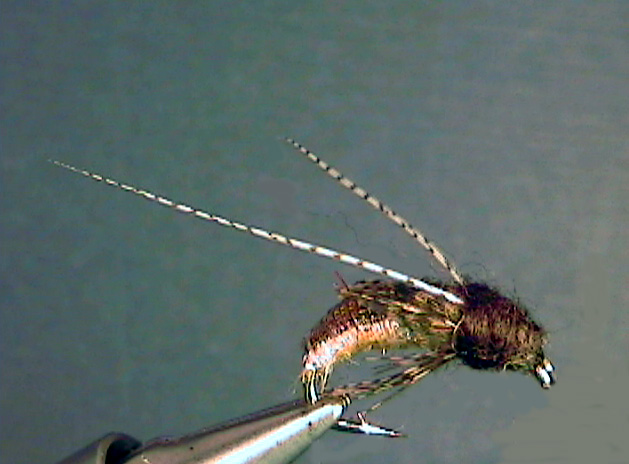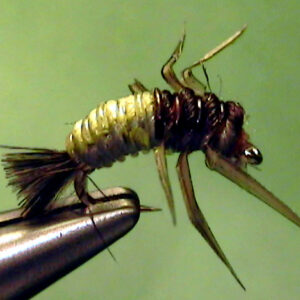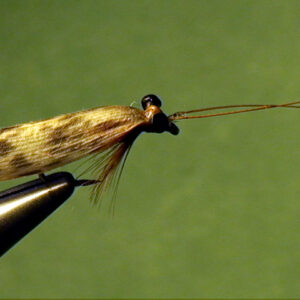Hook Size: 10
directly exposed during the time they hatch. These pupae normally emerge at nighttime,
or during the evenings, on the surface of the water. They normally do this in the calmer
sections of the fast water they live in. Pockets behind boulders, pockets along banks and
other places where the water is moving rather slowly are the ideal type locations.We suggest you start fishing this fly after the sun has set. On very cloudy, overcast days,
you may want to start earlier in the afternoon.
Presentation:
Our Perfect Fly Pupa imitation should be cast down and across and allowed to rise to the
surface in these quite water areas. This is best done from the banks. Fishing at night in
fast pocket water can be rather dangerous, especially if you are not very familiar with the
stream. If you fish from the banks, they will have to be fairly clear of high bushes and
trees, of course.
Mend the line to help get the fly down and allow it to swing around almost directly
downstream from the tip of your rod. Stop the rod tip and allow the fly to come up to the
surface. The current should do this for you. Just hold the rod tip still. Most of the strikes
come when the fly just reaches the surfaces.
When you have made two or three cast in a given area, move downstream a couple of
steps and repeat the process.


